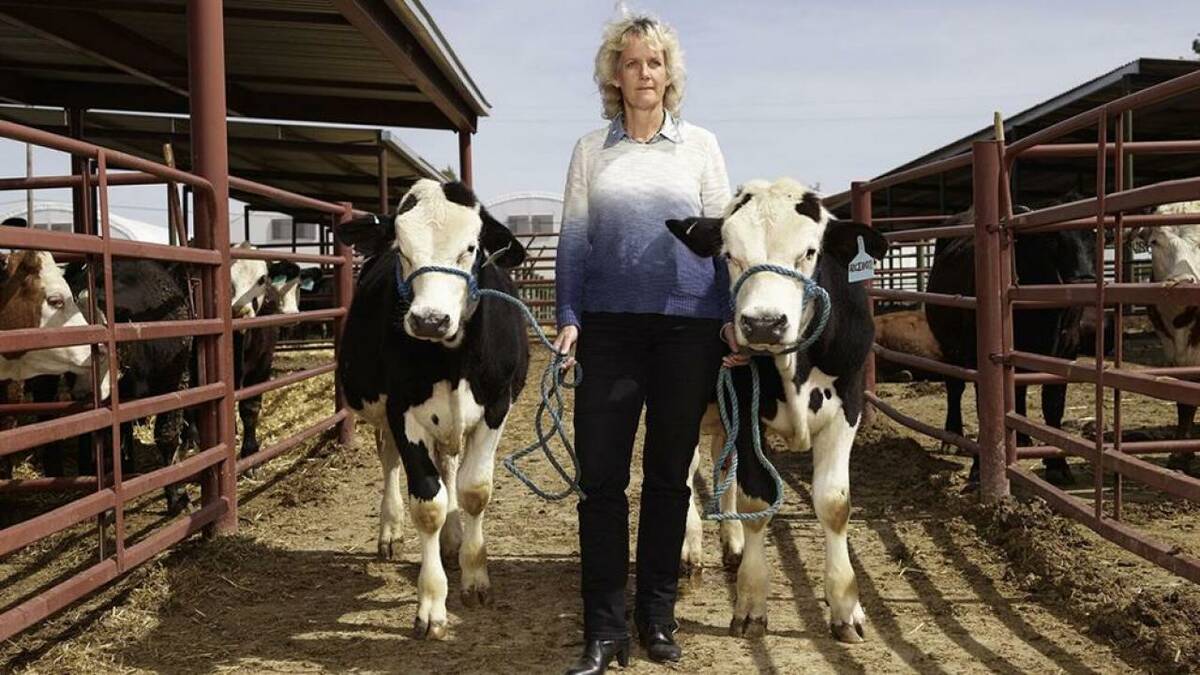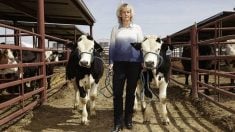A method of delivering pulse seed inoculant has shown positive test results in southwestern Saskatchewan.
Putting pulse seed rhizobia inside a polymer coating “is the most effective way of infecting the plants yet,” said Swift Current, Sask., research scientist Bix Biederbeck, a recently retired Agriculture Canada scientist.
Biederbeck helped develop and operate a single-season research trial for Grow Tec Seed Coatings of Edmonton last summer on its ProTec pulse inoculant product.
“We saw some dramatic results. It was an ideal year to try out a new delivery method that would protect the delicate rhizobia against dry soil conditions,” Biederbeck said.
Read Also

Stacking Canada up on gene editing livestock
Canada may want to gauge how Argentina and other countries have approached gene editing in livestock and what that has meant for local innovation.
Last spring, the brown soil around Swift Current was dry until mid-June.
Dry, cold dirt is a hostile environment for pulse inoculants.
For years Biederbeck and his colleagues have discussed ways to keep rhizobia alive long enough to infect host plants.
“Even 15 years ago we talked about someday having a method of seed treating large-seeded crops like peas, beans and lentils that would trap the bacteria next to the seed and keep it alive for weeks, rather than days,” he said.
“We knew inoculation was the key to growing viable pulse crops, but infecting the crop early and inoculating the soil so that the whole root system would be infected, that was the trick.”
Garry Hnatowich, a research agronomist with inoculant company Philom Bios, said polycoating rhizobia inoculant onto seed has been around for years. It was an option for growers but a costly one.
“Farmers resisted spending that $10 or $12 for poly coating,” he said, noting standard inoculating systems at that time were much cheaper.
Today, better inoculating systems are available and producers are willing to pay for improved performance.
“Now granular costs $10 or $12 and the poly coating is cost competitive,” said Hnatowich.
In a wet year “any inoculant method will work. If it gets drier, average kind of year drier, then the more recent granule (delivery methods) are likely just as effective as this new method.
“But when it is really dry, this method of trapping the inoculant in these water-soluble polymers seems to be the best.”
Hnatowich said it appears that roots and shoots are forced into contact with the bacteria as soon as the seed germinates. When moisture arrives, it dissolves the coating and carries the rhizobia into the soil, allowing the populations to become mobile for later infection of lateral roots.
Kevin Zaychuck of 20/20 Seed Labs in Nisku, Alta., also worked on the study.
“This early infection results in the nodules forming on the crown of the plant,” Zaychuck said.
“These can be sloughed off in drought conditions and, while they are important for early season growth, are not as important later when the seed is being formed and protein levels are being set in the seed,” he told the University of Saskatchewan Soils and Crops event Feb. 17.
Biederbeck said peas, lentils and chickpeas were included in the experiment. Toledo peas were the only crop that matured early enough to avoid the early fall’s wet weather and provide a yield analysis.
Yield of the crop that was not inoculated was 16.3 bushels per acre. Seed inoculated with a liquid yielded 30.4 bu., peat systems 32.8 bu., granular delivery 37.6 bu., and the polymer coated inoculant produced 47.1 bu.
“We saw higher plant numbers (in the polymer coated seed) from the same seeding rates. We got higher protein levels on the higher yields as well,” said Biederbeck.
Trevor Thiessen of Philom Bios said his company provided inoculants for various Grow Tec trials in the past two years. It appears that the coating works with a variety of inoculants including Tag Team and N Prove, he said.
Zaychuck said the group counted the live bacteria present on seed. Three hours after being treated with liquid, 1,000 rhizobia bacteria were counted, while 10,000 were alive on peat-treated seed. The poly coated seed had more than one million still alive after seven days.
Biederbeck said these results need more study, but “the more bacteria you have alive to infect the plant as early as possible and remain alive in the soil – that is the name of this game.
“This (delivery method) has taken those extra steps out of the farmer’s hands. Peat treating has always been an extra step farmers hate doing when they are busy and it was easy to mess up. Liquid has been more convenient, but it only works well in wet, wet conditions … Granular is wonderful if you have an extra grain tank on your seeder (cart). But this is easiest, and it appears from our research, the most effective in dry conditions,” Biederbeck said.
Hnatowich said most of the inoculant companies are looking at poly coatings now.
Research into the use of poly coating granular inoculants to improve their flow and resist freezing in cold weather are also under way, say agronomists.














